Features
The Legend of Zelda: A Link to the Past Refined a Franchise to Perfection

“Long ago, in the beautiful kingdom of Hyrule surrounded by mountains and forests . . .”
A Link to the Past’s legacy is often attributed to Nintendo recognizing The Adventure of Link as a misstep by styling Zelda 3 in the vein of the original Legend of Zelda, but the franchise’s first Super Nintendo outing owes its successes to both of its predecessors. As much as A Link to the Past resembles The Hyrule Fantasy– visually, mechanically, & conceptually– the game’s DNA is rooted in Zelda II’s foundation. In fact, both titles were briefly conceived at the same time by Shigeru Miyamoto, with at least one of his scrapped ideas for Zelda 3 (a controllable Fairy) finding its way into The Adventure of Link. When it comes down to it, A Link to the Past is as in-tune with its past as a video game can be; and it’s exactly this quality that allows A Link to the Past to stand out as one of the greatest sequels the medium has ever seen.

Where the original Legend of Zelda is best defined by an emphasis on freedom & exploration, and Zelda II by its combat & penchant for memorable setpieces, A Link to the Past carves its identity by blending together the NES duology’s strongest qualities. The game’s opener– Link awakening in the middle of a downpour to sneak into Hyrule Castle– is more dramatic than anything the series has seen up to this point, but the entire sequence is driven by concepts the first two games already established. Link begins his adventure swordless ala The Legend of Zelda, but breaking into Hyrule Castle in the middle of the night speaks to how Zelda II peppered progression with grand gameplay events (think to scale Death Mountain.)
Combat plays off Zelda II’s reflex-based swordplay. Soldiers are quick to attack Link, and striking head-on can often result in blades clashing. Players need to be mindful of where they’re attacking from, reacting to enemy movements & attacking accordingly. Combat is never as demanding as it was on Zelda II, but A Link to the Past’s action is driven by the same conventions. Battles aren’t framed around up & down movements, of course, but swordplay is fast-paced, enemies always deal a reasonable amount of damage, and Link’s item loadout goes so far to combine the versatility of Zelda II’s magic with Zelda 1’s equipment variety.
The very first item Link can get his hands on isn’t a weapon, but a puzzle tool. The Lamp brings back Zelda II’s magic system while filling a purely navigational role. Unlike Zelda 1’s Candle which lit any room the players used it in, the Lamp can only light specific torches– both as a means of casting out darkness and solving puzzles. The Lamp places an immediate emphasis on exploration while stressing the importance of Link’s sub-equipment (arguably necessary since Zelda II kept Link’s tool mostly passive.) Compare the Lamp directly to the Sword, and they’re almost distilled versions of TLoZ & AOL respectively. It’s fitting that Link’s first two items function so ‘rigidly’ since the Boomerang represents the practicality of ALttP’s design as a whole.

The Best of Both Worlds
Link’s third item, the Boomerang is found deep within Hyrule Castle. At first glance, it functions exactly as it did in the first game: stunning bigger enemies on contact, killing smaller ones outright, and nabbing items from afar. Later on, however, players will realize that their Boomerang can hit switches from afar while phasing through certain obstacles. Past the midway point, it’s not unusual to encounter rooms where the Boomerang is just as useful for subduing enemies as it is for progressing forward. The Boomerang is as viable for puzzle solving as it is for combat, a distinction the item shares with most of A Link to the Past’s weaponry.
While it takes time for the Boomerang’s full potential to show, the Eastern Palace forces players to understand the Bow & Arrow’s utility before the dungeon is over. Rather than using Rupees as ammo, the Bow comes with a proper Quiver this time around, incentivizing players to actually use their new toy. Eyegores infest the Eastern Palace, enemies that need to be baited before being shot with an arrow. Early rooms feature pots that can be thrown to kill the Eyegores, but the last few rooms of the dungeon remove this crutch to force players to learn how to aim & dodge out of close-range combat. This becomes especially critical in the game’s first real “Level,” the Dark World’s Dark Palace.

The Dark Palace makes the most out of the Bow & Arrow specifically through Goriyas– enemies that mirror Link’s movement and can only be damaged with arrows. Players need to position themselves accordingly to fight back. This is as simple as lining up in front of a green Goriya, but red Goriyas will attack Link on sight, forcing players to shoot first and quickly reposition their opponent. Goriyas are enemies designed as puzzles, balancing the skillful positioning of Zelda II with The Legend of Zelda’s brainteasers.
The Dark Palace very carefully utilizes the Bow & Arrow as an action & puzzle-solving tool that doesn’t favor one over the other. Conveying to the player that ALttP is as action-packed as it is thought-provoking is of utmost importance. At its core, A Link to the Past is a non-stop gauntlet of everything that made the NES Zelda games so good: engaging combat, rewarding exploration, and thought-provoking puzzle design. A Link to the Past doesn’t fix what isn’t broken, it refines what wasn’t perfect.
Beyond swordplay maintaining Zelda II’s focus on reflex-based gameplay, Link’s sword is all-around more versatile. Link’s forward stab has been replaced with a slash that can cut enemies diagonally along with parrying projectiles like spears. By holding the attack button, Link can extend his sword into a stab or charge up the series’ first iteration of the Spin Attack (framed as an old family technique passed down from uncle to nephew.) After the Eastern Palace, Link even gains access to the Pegasus Boots– a piece of equipment that lets players dash with their sword extended. With the Master Sword offering Link his signature Sword Beam at the halfway point, players have quite the blade on their hands.
Magic’s seen a considerable overhaul, if only because the game actually offers Link a reliable way to restore his Magic Meter. Magic Pots regularly drop ala Hearts and Magic Medicine can be tucked away for later use in Bottles. There’s still tension tied to the magic meter (especially if spellcast inconsiderately,) but it doesn’t need to be rationed anymore. Spells are also connected to equipment now, no longer tucked behind a menu. Magic ends up playing a more fluid role in combat as a result. Both the Fire & Ice Rods are long-range spells that burn & freeze enemies respectively, as easy to use as the Boomerang or Bow & Arrow.

Ocarina of Time is often attributed to giving The Legend of Zelda its universal action button, but the series began experimenting with context-sensitivity with A Link to the Past. While the action button isn’t as all-purpose as it would become, players can now push, pull, grab, & throw certain objects with the A button. Bombs are no longer a one & done dump, Link now able to pick them up and toss them after the fact– a skill necessary for progression in some later dungeons. Levers need to be pulled, statues need to be pushed, and players are able to immerse themselves in Hyrule with greater ease thanks to this newfound interconnectivity.
By allowing players to directly interact with their surroundings, Hyrule goes from a well-realized backdrop to a living, breathing world. Bombable walls return from the original Zelda, but they’re rounded out by underground grottos, elaborate cave systems, and open-world that combines the freedom of The Hyrule Fantasy with the character of The Adventure of Link. Kakariko Village is the only proper township in the game, but it accomplishes everything Zelda II’s towns did & more as a central hub. Kakariko features a shop, NPCs to give the player direction, countless internalized secrets, and a fortune teller nearby. Some NPCs turn their heads to follow Link’s movements, and a key few will even report Link for ‘kidnapping’ Princess Zelda if he gets too close.
While Kakariko Village is home to the only proper community in Hyrule, quite a few NPCs scatter the country. Thieves instinctively mug anyone who dares enter the Lost Woods, Zora’s territorially guard their leader & top salesman, and Syrup the Witch has situated her potion shop in a nice little corner surrounded by Buzz Blobs. To say nothing of all the other NPCs tied to mini-games and small-scale side quests that lead Link directly to new items, whether they be Heart Pieces or new equipment. Escorting a chest to a master thief and a lost blacksmith to his partner isn’t exactly on the same level as Link’s Awakening’s trading sequence, but they’re strong examples of early side quests that test how much players have actually been paying attention to.

“In a realm beyond sight, / The sky shines gold, not blue.
There, the Triforce’s might / Makes mortal dreams come true.”
It’s worth pointing out how exactly A Link to the Past both splits & frames its progression. The first game in the series to make use of a Dual World mechanic, Hyrule is only the tip of the iceberg. Upon clearing Hyrule Castle for the first time, players more or less have full access to the Light World. It’s a move that’s reminiscent of the original Zelda, but this section of the game is also fairly linear. Even if players are free to explore at their leisure, Link must complete the Eastern Palace, Desert Palace, and Tower of Hera in their set order– a stark contrast to how the NES titles handled dungeon crawling. That said, the trek towards the Tower of Hera reveals that there’s much more hiding under the surface.
After escorting an old man up Death Mountain, players will be given a Magic Mirror that can warp them between the Light & Dark Worlds. Hyrule is only one-half of the game, with an entirely different map lurking underneath. Not only is the Dark World its own area with unique enemies, NPCs, puzzles, mini-games, and dungeons, traversing the landscape requires clever use of the Magic Mirror. The Mirror plays off your physical understanding of in-game geography and level design by warping you between the Light & Dark Worlds on the spot. It’s necessary for advancing the story in some cases, but Mirror warping is mainly used to hide Hyrule’s best-kept secrets.
It’s worth keeping in mind that this is only a taste of the Dark World and it doesn’t take much longer for Link to be thrust into the corrupted Golden Land. This shift to the Dark World is not dissimilar to Link traveling to Eastern Hyrule in Zelda II. Both events mark a rise in difficulty, along with an uptick in player freedom. Although the Dark Palace must be completed first, you’re free to tackle the Dark World’s many dungeons in just about any order. With more tools at his disposal at this point, Link will also be able to explore virtually every inch of Hyrule’s worlds.

Dungeons themselves are quite layered now. Link will be moving up & down floors, navigating through rooms with multiple planes, and tracking down hidden rooms by cross-referencing the map. Light World Dungeons also feature seamless set pieces that serve as nature lead-ins to the main event, akin to Zelda II. Sneaking into Hyrule Castle during a storm, traversing a desert & translating sacred text to get into the Desert Palace, and escorting an old man through Death Mountain before scaling it yourself to reach the Tower of Hera make the journey just as fulfilling as the destination.
Conversely & as mentioned, Dark World dungeons can be done in just about any order once the Dark Palace is completed and often require knowledge of the game’s core mechanics to access. Link has to solve a puzzle in the Light World in order to start the Swamp Palace in the Dark World; Skull Woods, Gargoyle’s Domain, and Ice Palace can only be accessed by finding warp points in the Light World; and Misery Mire & Turtle Rock need the Ether & Quake Medallions respectively to trigger. The Dark World’s dungeons are labeled as Levels 1 through 7 on Link’s map and in the staff roll, but not much will keep him out of Levels 2 through 7.

The biggest dungeon design change unique to A Link to the Past is the introduction of the Boss Key. In The Legend of Zelda and Zelda II, Link could reach the boss room so long as he had any old key. Similarly, dungeon items were often stashed away in indiscriminate rooms. The introduction of the Boss Key now fractures dungeon progression into before & after– usually by featuring a Boss Door that leads to the second half of the dungeon, rather than immediately to the boss. More importantly, said Boss Key is now used to open Big Chests, ornate trunks keeping the dungeon’s main item pristine.
Worth noting, A Link to the Past’s dungeons are explicitly themed beyond Zelda 1 & II’s color-coded panels. Themes aren’t as well-realized as they’d become in Ocarina of Time, of course (or even Link’s Awakening,) but each dungeon’s layout is cohesive to the region they’re set in. Some like the Desert Palace and Skull Woods even force Link to exit the dungeon in order to find an alternate entrance. Compare this to the NES’ one & done dungeons. They’re compelling in their own right, but A Link to the Past trades labyrinthine tests of endurance for catered puzzles, enemies, & obstacles in every single room– arguably what The Legend of Zelda always should have had.

Triforce of the Gods
Narratively, A Link to the Past is The Legend of Zelda’s first prequel, offering deeper insight into the series’ lore, themes, and cast. The story itself is framed in the aftermath of the Imprisoning War, a conflict that directly resulted in Ganon obtaining the Triforce, the Sacred Realm being corrupted, and the Knights of Hyrule’s near-extinction. Ganon himself is revealed to have once been a man, a thief named Ganondorf who lusted after the power of the Gods. A Link to the Past notably released as Triforce of the Gods in Japan, a title that better suits the story’s premise.
A Link to the Past marks the first time that The Legend of Zelda sheds away its Christian undertones, replacing any & all Judeo-Christian imagery with Hyrule’s own vision. The Triforce is more prominently a symbol in its own right and the Sanctuary– which would otherwise be a Christian church– exchanges the holy cross for an ornate bird. Through Hyrule’s new creation myth, the manual also once again gives the plot a level of depth that wouldn’t fit into the game proper.

Perhaps alluding to how the original Legend of Zelda was set in a Hyrule overrun by chaos, the Japanese manual states that the Gods created the world out of nothing but chaos. The creation myth doesn’t factor into the plot itself (a commonality Ocarina of Time would end up sharing with A Link to the Past,) but it’s the context that completely reshapes Hyrule’s history. The Adventure of Link alluded to a storied world, but A Link to the Past shows that world in action while bestowing unto Hyrule cultural depth. The English localization doesn’t sell just how crafted Triforce of the Gods’ lore is, but there’s a reason The Legend of Zelda has seldom strayed from the mythos A Link to the Past introduced: you don’t fix what isn’t broken.
With Hyrule’s creation myth and Ganon’s further characterization comes the Master Sword– an ancient blade lost to time, forged long ago for a now-forgotten purpose. Only a true hero can wield the Blade of Evil’s Bane and Link’s quest for the three Pendants of Virtue stands as one of the clearest examples of the monomyth in gaming– and frankly in general. It’s not made clear how (or if) this Link is related to the future Hero of Hyrule, but the Legendary Hero is himself one of the last Hylians whose bloodline can be linked back to the knights of yore. Link’s journey is one full of loss and personal defeats, complete with the hero descending into what is ostensibly Hyrule’s underworld only to come out the champion the world needs.
A Link to the Past is the Game Where The Legend of Zelda Found its Voice

Link’s as mute as ever, but there’s a strong arc running in the foreground; one that takes advantage of the medium’s interactivity & inherent strength for visual storytelling. Zelda’s not quite a character yet either, but she plays an active & engaged enough role in the plot. The simple act of having Link rescue Zelda at the start allows players to form an actual connection to her. Zelda even telepathically gives Link a few hints in the Dark Word and can be spoken to in the Sanctuary before pulling the Master Sword. It might be her primary role, but Zelda’s not just a damsel in distress.
Curiously, Triforce of the Gods’ lore emphasizes that the Triforce does not judge good or evil. It is a symbol representative of the Gods’ power, fulfilling the wielder’s wish regardless of intent. Temptation drove Ganon towards the Triforce of Power in the first Zelda and turned the King of Hyrule against his own sister in Zelda II, so it’s appropriate for A Link to the Past to frame the Triforce as a truly neutral icon. The Triforce can do good as evidenced by the end of all three games, but it leaves chaos in its wake and the NES duology proves that the peace instilled by the Legendary Hero can’t last.

It’s hard not to see The Legend of Zelda: A Link to the Past as its own beast entirely. After all, it recontextualizes and rebuilds so much of what defined The Legend of Zelda’s early history. At the same time, it’s a game that only exists because of the foundation it’s built on. The Hyrule Fantasy and The Adventure of Link are ingrained in A Link to the Past’s DNA, both in what the titles offer & what’s removed. It’s hard not to notice that the Christian imagery has been swapped for an overt focus on the Triforce & polytheism, but that just makes the added lore richer.
In many respects, A Link to the Past is the game where The Legend of Zelda found its voice. It’s a title that guided the structure of the franchise all the way up to 2017’s Breath of the Wild, while influencing countless other developers along the way. A Link to the Past reinforces & refines The Legend of Zelda’s strongest qualities to perfection. While the series would continue to innovate meaningfully– with both Link’s Awakening and Ocarina of Time improving upon several of ALttP’s concepts– no other Zelda sequel reflected on what came before as masterfully as The Legend of Zelda: A Link to the Past.

-

 Features4 weeks ago
Features4 weeks agoDon’t Watch These 5 Fantasy Anime… Unless You Want to Be Obsessed
-

 Culture3 weeks ago
Culture3 weeks agoMultiplayer Online Gaming Communities Connect Players Across International Borders
-

 Features3 weeks ago
Features3 weeks ago“Even if it’s used a little, it’s fine”: Demon Slayer Star Shrugs Off AI Threat
-
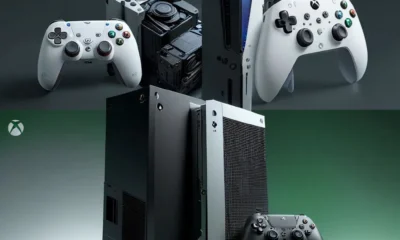
 Features2 weeks ago
Features2 weeks agoBest Cross-Platform Games for PC, PS5, Xbox, and Switch
-

 Game Reviews4 weeks ago
Game Reviews4 weeks agoHow Overcooked! 2 Made Ruining Friendships Fun
-

 Features3 weeks ago
Features3 weeks ago8 Video Games That Gradually Get Harder
-

 Game Reviews4 weeks ago
Game Reviews4 weeks agoHow Persona 5 Royal Critiques the Cult of Success
-
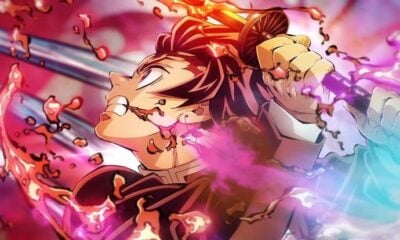
 Features2 weeks ago
Features2 weeks agoThe End Is Near! Demon Slayer’s Final Arc Trailer Hints at a Battle of Legends
-
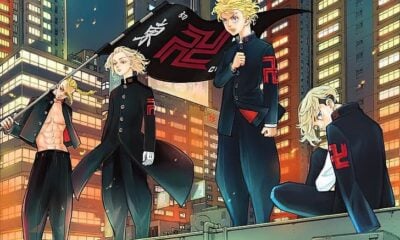
 Features2 weeks ago
Features2 weeks agoDon’t Miss This: Tokyo Revengers’ ‘Three Titans’ Arc Is What Fans Have Waited For!
-
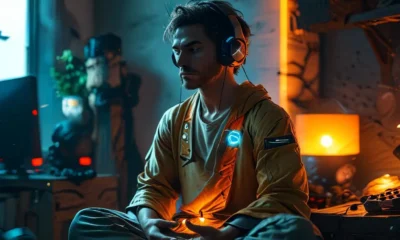
 Uncategorized3 weeks ago
Uncategorized3 weeks agoSleep Meditation Music: The Key to Unwinding
-
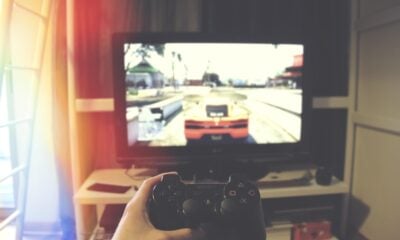
 Guides2 weeks ago
Guides2 weeks agoHow to buy games on Steam without a credit card
-
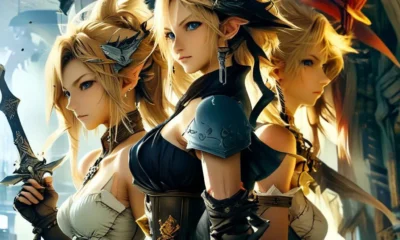
 Game Reviews2 weeks ago
Game Reviews2 weeks agoFinal Fantasy VII Rebirth Review: A Worthy Successor?


















Gregamo
February 6, 2022 at 11:02 am
Such a good article, really informative.